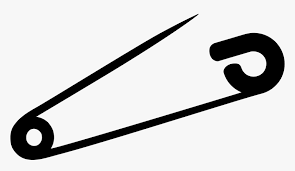Project Report For Safety Pins
Introduction
Project report for safety pins is as follows.
The two office supplies that are most frequently used are gem clips and staple pins. Although safety pins are mostly a fashion element and part of clothes. Small diameter wires are used to make each of these goods in automatic production equipment that is specifically developed to do so.
These are used in all workplaces and establishments, and they are consistently in demand. The need is constantly increasing as there are more businesses and industrial facilities. All products are produced using automated equipment that was created specifically for the task.

Product & Application of Safety Pins
Staple pins are made of mild steel with a diameter ranging from 0.4 mm to 1.8 mm, a form, and a coating, either galvanised copper or chrome, depending on the application. With the aid of a stapler machine, which forces pins to puncture the sheets and bends the ends to securely hold them together, staples are frequently used to bunch together the papers.
Gem clips are used to gather together between the clips because of their spring motion. They are gathered together by the clip without being harmed. These are made from mild steel wires that have been galvanized, chromed, or PVC coated to a thickness of 0.4 to 2 mm.
Both safety and regular paper pins have a sharp edge that can penetrate through sheets of paper, cloth, or other materials. To grip and cover the sharp edge and avoid unintentional harm, safety pins include a safety head. Other than offices, these devices can also be used at home or for personal use.https://shardaassociates.in/pr-samples/steel-foundry/
Get Completely Custom Bankable Project Report
Raw Material of Safety Pins
The main raw material consists of various gauges and types of hard drawn wires with hardness and tensile strength suitable for each product. These premium wires comply with SAE 1018 -1065 and have good tensile strengths between 700 and 1500 N/mm2. A staple pin also needs adhesive to keep the pins in a staple strip together. For the safety pins’ heads, strips are required. Market vendors offer supplies for pickling, nickel plating, and galvanising.
Market Potential Of Safety Pins
Expenses

Product Cost Breakup

Reveneue Vs Expenses

Market Trend

The number of companies and industries increases yearly. A high-quality manufacturer has a sizable market opportunity because these pins and clips are commonly used in workplaces and are ordinarily made for one use. The objects are frequently used to combine or fasten documents, bags, money, photos, and sheets of paper. Special purpose pins and staples are used by the government, financial institutions like banks, and other enterprises like hotels and restaurants in addition to trading offices to assemble clothing, leather, rubber, and other products. These things will keep growing.
Customers in this market tend to be more quality-conscious and less price-sensitive. The home products market is thought to be worth between Rs 10,000 crore and Rs 12,000 crore, with Rs 3,000–4,000 crore going to stationery and the remaining amount going to miscellaneous products. The SSI sector includes both the manufacture and/or retailing of goods. Units in the unorganized sector have also been growing, and a few of their brands are becoming well-known on a national level.
There are many domestic and foreign businesses in this industry, particularly in the production of paper and other high-value/volume goods, which leaves room for the unorganized sector to meet consumer demand for other goods like clips and pins and the like. There are numerous local and international brands present in the industry, which is expanding by 8 to 10% globally.
30% of the market’s overall value, or more than Rs 6600 crores, is attributed to the unorganized sector. 90% of the market is in the low end, while less than 1% is in the premium and top end. The reasonably priced mid-range goods make up the difference.

